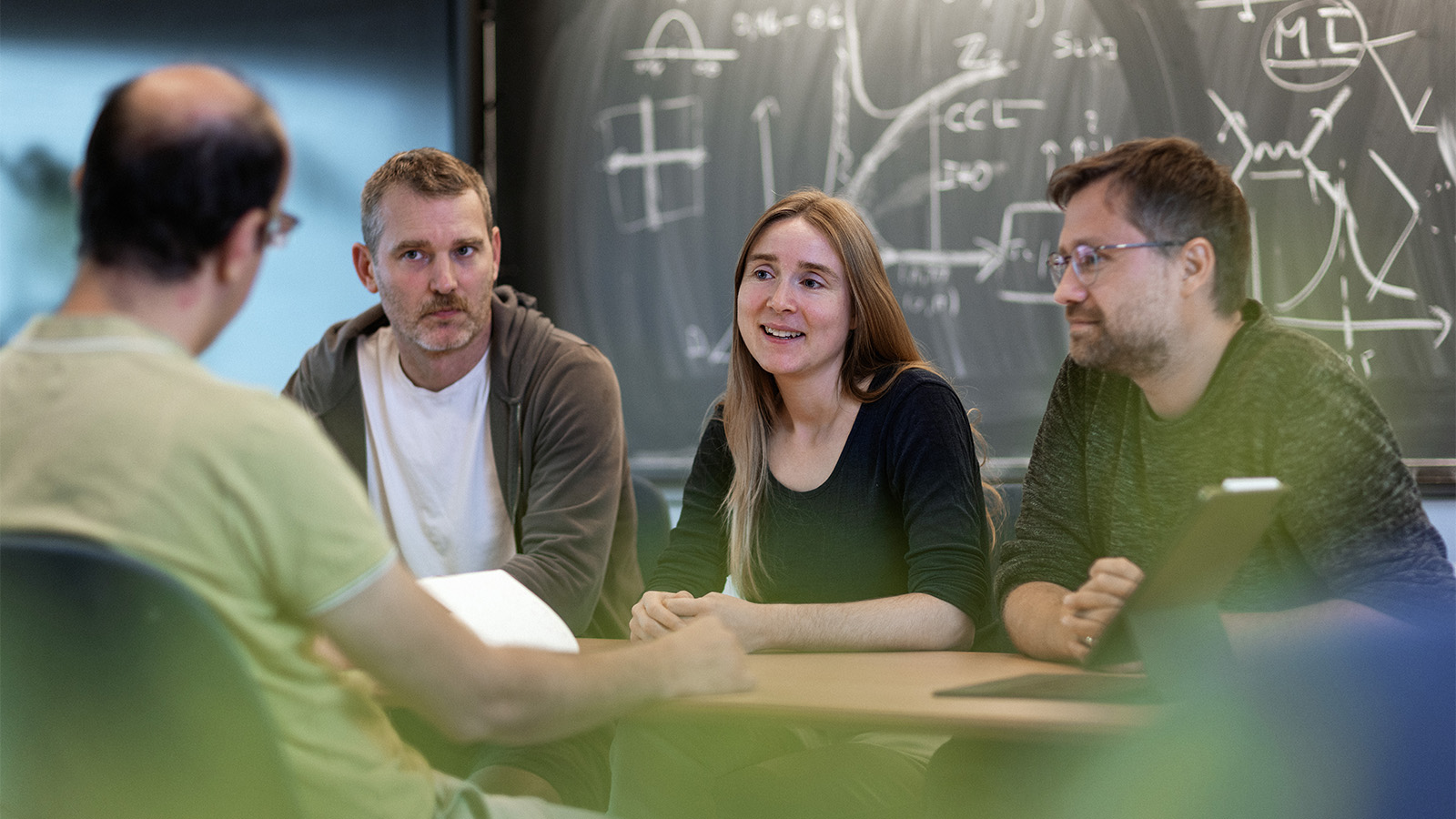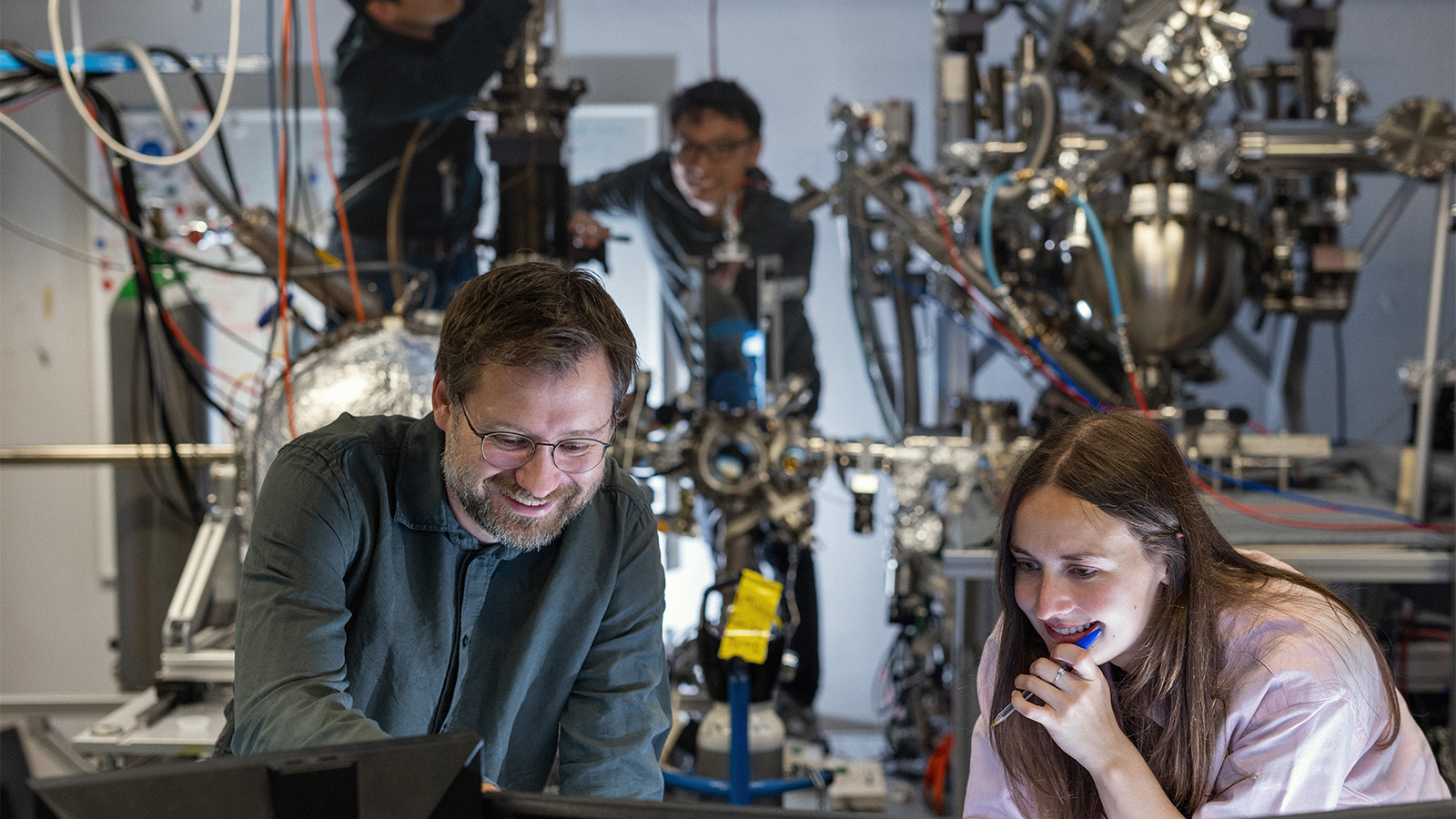QuSpin Research - Center for Quantum Spintronics (QuSpin)

Research Goal
The principal goal of the Center is to describe, characterize and develop recently identified quantum approaches to control electric signals in advanced nanoelectronics, conceptually different from those existing today. The research has been focusing on three judiciously chosen low -dissipation systems: magnetic insulators, topological insulators, and superconductors which correspond to three research themes: insulator spintronics, topological matter, and super spintronics.
Our unique competitive edge is addressing the ultra-low power innovations by uniting expertise from insulator spintronics, topological matter, and super spintronics. Although these themes are individually exciting, we combine them to generate significant added value. Electrons can move in free air. In materials, their motion can differ significantly. In metals, the collective flow of the electrons resembles that of particles, but with dramatically altered properties. Their mass, charge, and even spin can be modified. This dressed behavior resembles new particles, so-called quasi-particles, that require new models and new concepts.
We will address how such quasi-particles can convey spin information with exceptional tiny energy losses. Also, we will consider the dynamical evolution of the spin states for high-speed electronics. A supercurrent is a remarkable phenomenon where a current can flow in a supercurrent with no electrical resistance and no energy loss. New material combinations with such properties would revolutionize electronics and have a significant impact on society at large. We will consider how spin can flow via supercurrents.
Successfully meeting these challenges has the potential to transform electronic data transmission, storage, and processing. Ultimately, dissipationless spin transport would solve the problem of energy waste to the environment with potential uses in disruptive technologies.

Developing frontier knowledge in both theoretical and experimental disciplines
The synergetic interplay between theoretical developments and experiments will open new doors for the understanding and utilization of the bizarre nature of quantum physics in devices.
Nanoscale engineering facilitates the creation of new materials and material combinations where the electron spin and other quantum variables behave and can be controlled in new ways. We want to unravel the intriguing properties of these novel systems to further our understanding of quantum physics and enable new uses with less energy loss in electronic devices.
We want to be able to verify the theoretical models through experiment, as well as growing new materials with unprecedented and superior properties for transport of electric signals across longer distances.

The curiosity of a researcher
For some, research is an innate passion, while others develop it over time. The work at the center itself is one that does not have a definitive end, requiring all involved to focus on the long-term potential for the research.
In retrospect, the frontier of research is often described as moving forward in giant steps by remarkable individuals, but many researchers acknowledge the numerous smaller and crucial wiggly steps by many groups as equally important. This sentiment is central to QuSpin.
In our aim to realize the full potential of the electron, our researchers engage in creative ideas that sometimes set them in motion along seemingly random walks. By engaging on several high-risk projects in different directions, we believe our skilled personnel will find something extraordinary interesting, but we do not always know in which direction. Our walks are not entirely random, though. We increase our chances of groundbreaking findings by extending current collaborations and cultivating new relationships with top international researchers.
We are actively encouraging the focus of training the minds of those working with them to facilitate intuitiveness, presence to foresee the questions that lay ahead to answer, and the possible directions that can be explored.

Labs with advanced equipment
We want to be able to verify the theoretical models through experiment, as well as growing new materials with unprecedented and superior properties for transport of electric signals across longer distances. The synergetic interplay between theoretical developments and experiments will open new doors for the understanding and utilization of the bizarre nature of quantum physics indevices.
Spintronics is already pushing the data storage revolution. Through developments of new theories, datamodeling, and experimentation, it is our goal to create new concepts for the utilization of spin and pseudo-spin quantum states in low-dissipation systems.
The aim is to be pioneers in controlling these states electronically using nanostructured combinations of magnetic insulators, topological insulators, and superconductors.
